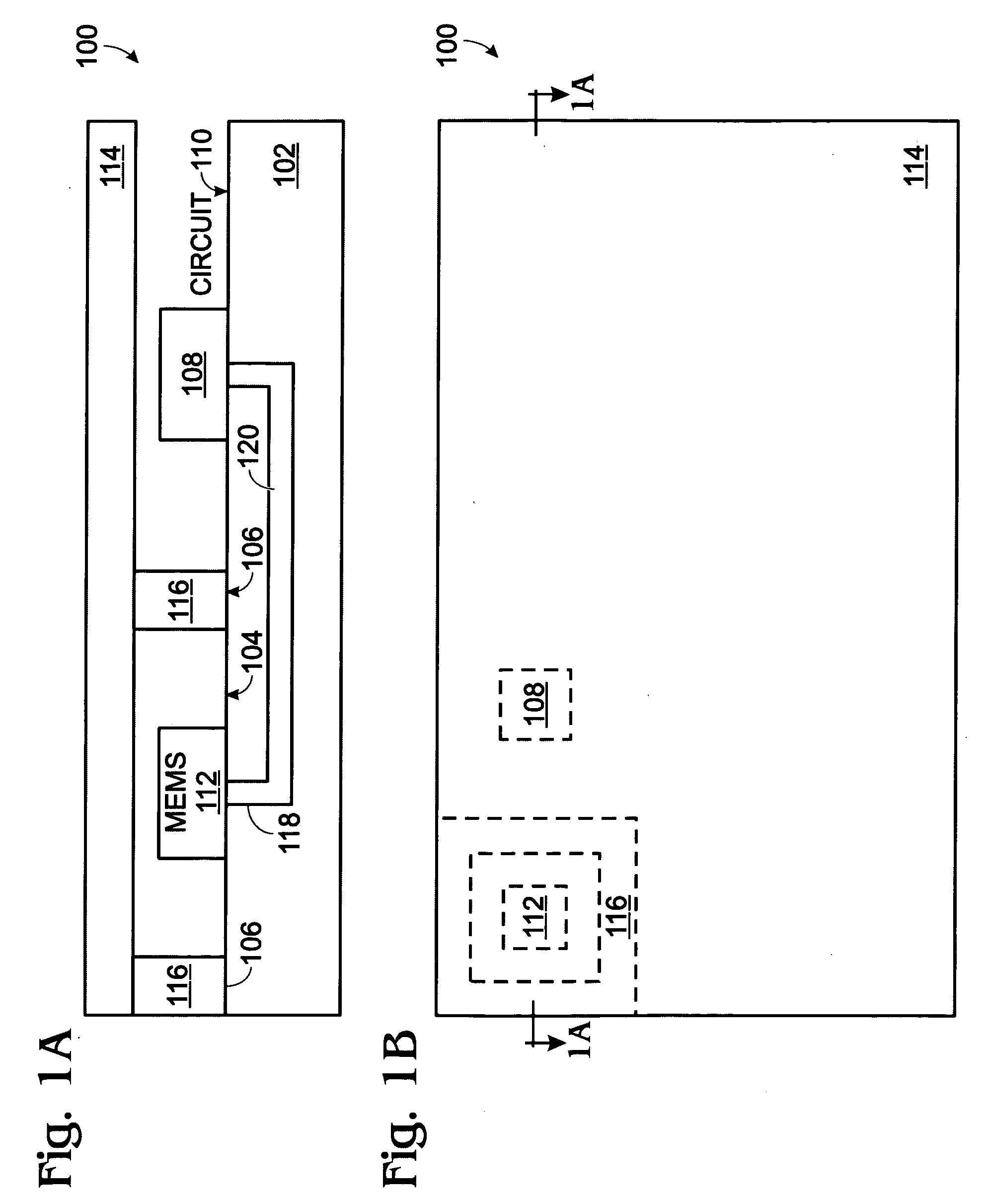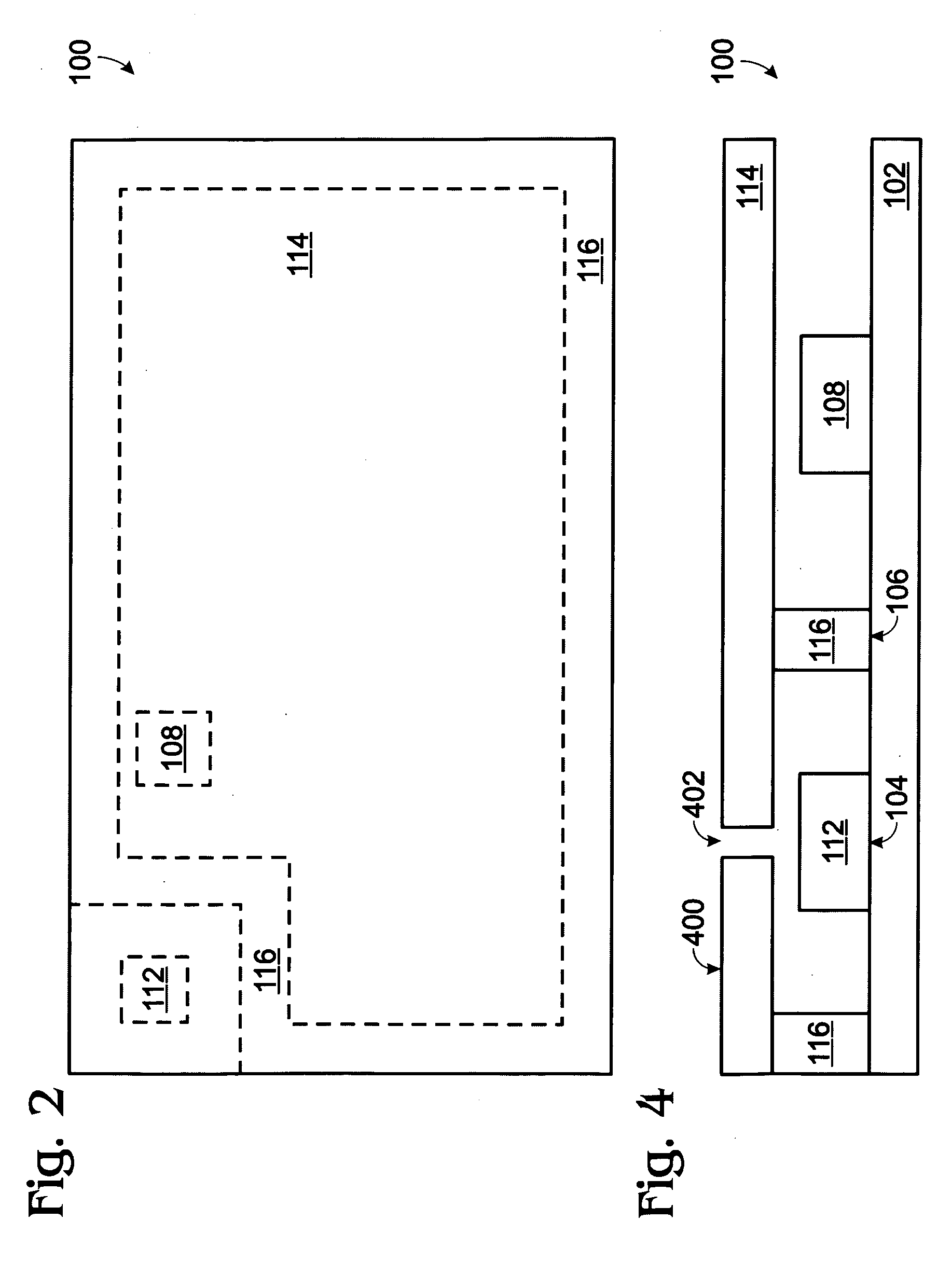Method for integrated MEMS packaging
a technology of integrated mems and packaging, which is applied in the manufacture of microstructural devices, electrical apparatus, and mems devices, etc., can solve the problems of large impact, noise inherent in the electrical connection between the mems package and the rest of the system, and large packaging proportion of the total cost of the mems device, so as to improve the overall electrical quality of the system
- Summary
- Abstract
- Description
- Claims
- Application Information
AI Technical Summary
Benefits of technology
Problems solved by technology
Method used
Image
Examples
Embodiment Construction
[0045]FIGS. 1A and 1B is a partial cross-sectional and plan views, respectively, of an integrated microelectromechanical system (MEMS) device package. The MEMS integrated package 100 comprises a first substrate 102 having a first region 104 with boundaries 106. An electrical circuit 108 is formed on a second region 110 of the first substrate 102. The electrical circuit 108 is electrically connected to the first substrate 102. For example, traces in the first substrate may conduct dc power, ground, and electrical signals to the electrical circuit 108. A MEMS device 112 is shown on the first region 104, electrically connected to the first substrate 102. The boundaries 105 may, or may not completely form a perimeter that surrounds the MEMS device 112. A second substrate 114 overlies the first substrate 102. A wall 116 is formed along the first region boundaries 106, between the first substrate 102 and second substrate 114.
[0046] In its simplest form, the first substrate 102 is a one-s...
PUM
 Login to View More
Login to View More Abstract
Description
Claims
Application Information
 Login to View More
Login to View More - R&D
- Intellectual Property
- Life Sciences
- Materials
- Tech Scout
- Unparalleled Data Quality
- Higher Quality Content
- 60% Fewer Hallucinations
Browse by: Latest US Patents, China's latest patents, Technical Efficacy Thesaurus, Application Domain, Technology Topic, Popular Technical Reports.
© 2025 PatSnap. All rights reserved.Legal|Privacy policy|Modern Slavery Act Transparency Statement|Sitemap|About US| Contact US: help@patsnap.com



